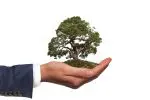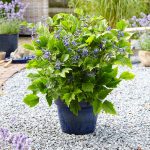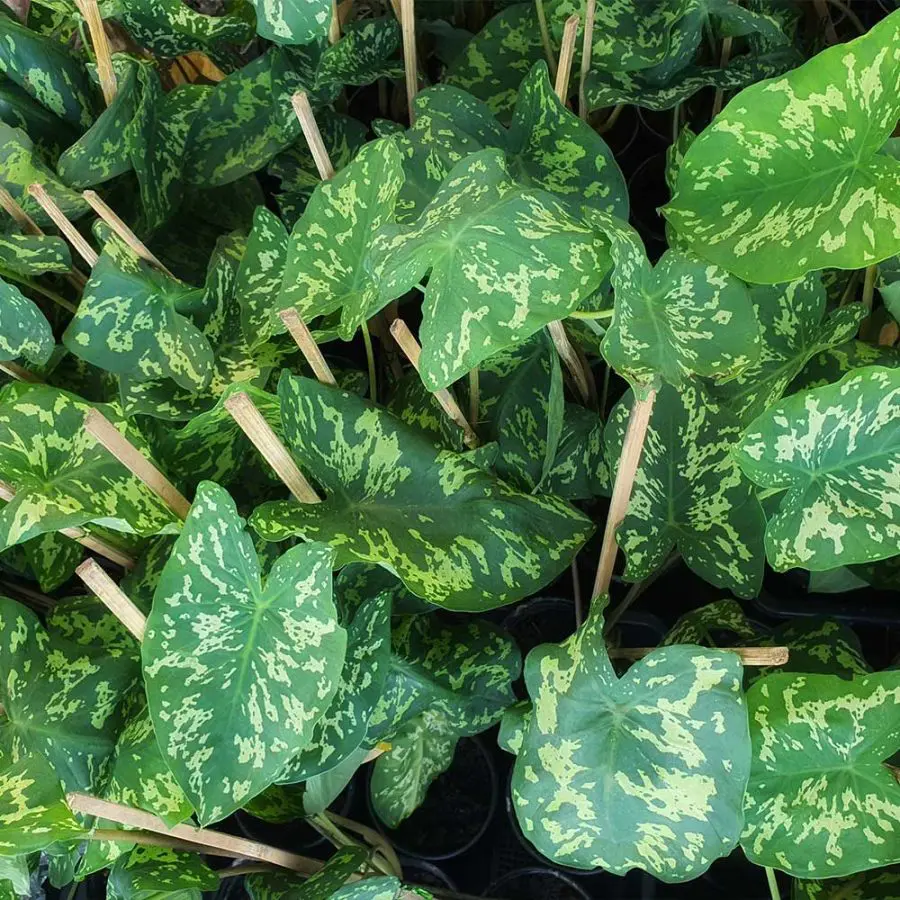This post contains affiliate links. If you buy something from one of our links we may earn a commission. Thanks
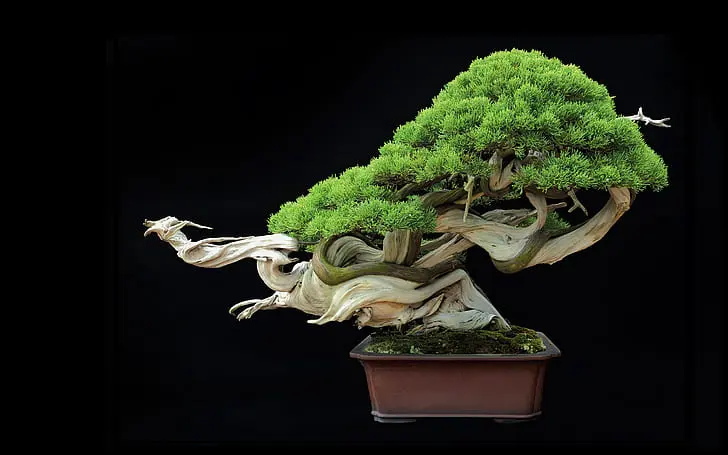 Discover the perfect environment for your mini tree! Uncover key differences and tips for indoor vs outdoor bonsai to keep your bonsai happy and healthy.
Discover the perfect environment for your mini tree! Uncover key differences and tips for indoor vs outdoor bonsai to keep your bonsai happy and healthy.
Indoor vs Outdoor Bonsai primarily differ in their environmental needs and the types of trees suitable for each setting. Indoor bonsai are generally tropical or subtropical species that require warmer temperatures, while outdoor bonsai are usually temperate species that benefit from seasonal changes. Care routines, including watering and light, also vary based on their placement.
Indoor vs Outdoor Bonsai
It’s the great debate that has puzzled many bonsai enthusiasts!
If you’re just starting out on your journey into the captivating world of miniature trees, you might be wondering which environment suits your green thumb best.
But don’t worry, because we’re here to shed some light on this conundrum and help you make the perfect choice for your new bonsai companion.
So, buckle up and get ready to explore the unique characteristics of indoor and outdoor bonsai trees and uncover the secrets to their happiness and well-being!
Introduction to Indoor And Outdoor Bonsai Trees
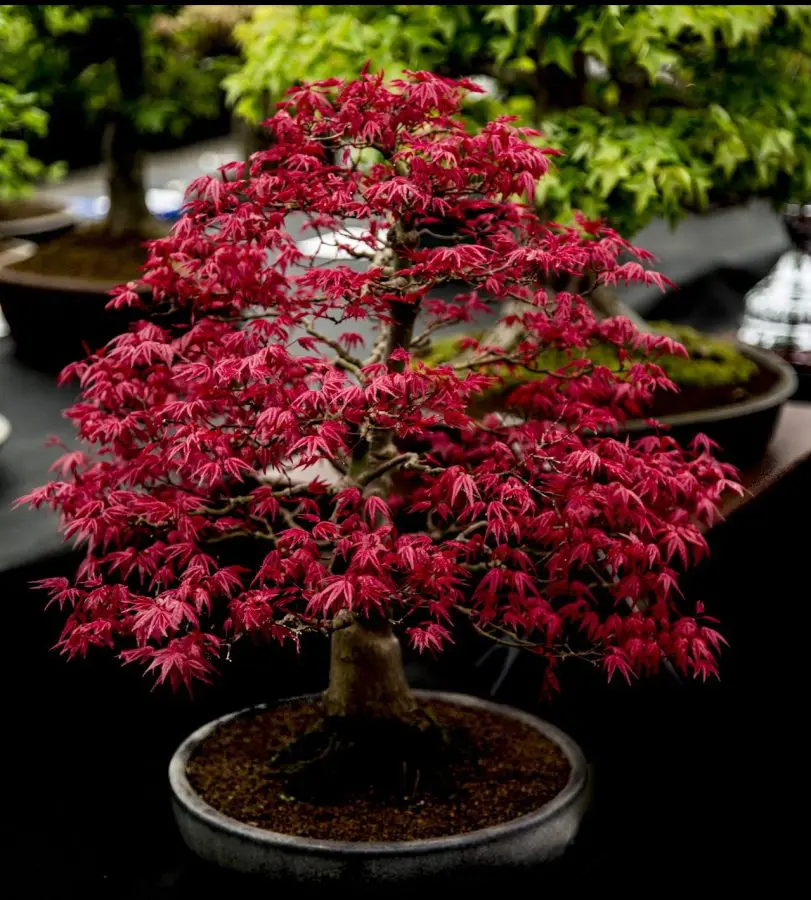
Hey there, fellow bonsai lover! Are you feeling a bit confused about whether to dive into the world of indoor or outdoor bonsai?
Worry no more, because we’re here to help you navigate through this fascinating miniature-tree universe.
In this guide, we’ll delve into the key differences between indoor and outdoor bonsai, along with essential care tips that’ll ensure your tiny tree thrives in its new home.
So, let’s get started on this exciting journey to find the perfect environment for your bonsai masterpiece!
A Miniature World of Beauty: Bonsai Art
Bonsai, an ancient art form hailing from Japan and China, has captured the hearts of plant lovers for centuries.
At its core, bonsai is all about nurturing and shaping small trees to mimic their full-sized counterparts in nature.
Through careful pruning, wiring, and attention to detail, bonsai artists create stunning, living sculptures that bring a sense of peace and harmony to any space.
Indoor vs Outdoor Bonsai: The Great Debate
One of the key decisions you’ll need to make as a budding bonsai enthusiast is whether to grow your tree indoors or outdoors.
While some species and styles can thrive in either environment, it’s crucial to understand the unique requirements of each to ensure your bonsai’s health and well-being.
After all, a happy tree makes for a happy bonsai artist!
Your Bonsai Compass: Guiding You Through the Choices
In this blog post, our goal is to help you navigate the sometimes confusing world of bonsai by providing you with essential information on indoor and outdoor trees.
We’ll discuss tree species, temperature, light, humidity, watering, and more, so you can confidently choose the right environment and care routine for your new miniature friend.
Let’s embark on this exciting journey together and unlock the secrets of bonsai bliss!
Tree Species Selection
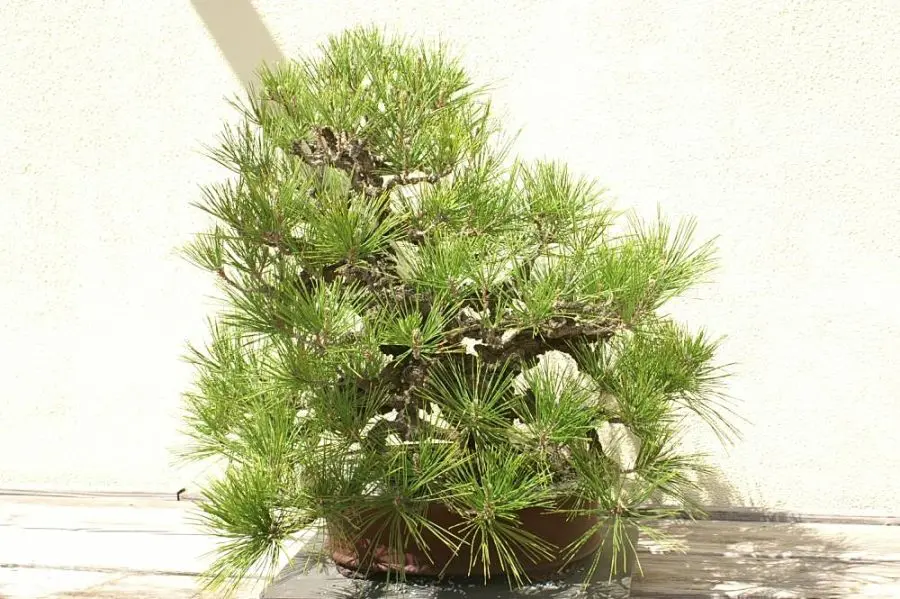
Alright, let’s talk tree species! One of the first and most important decisions you’ll make in your bonsai adventure is choosing the right type of tree.
With so many beautiful species to pick from, it’s easy to feel a bit overwhelmed.
But don’t worry, we’re here to help you navigate through the options and find the perfect match for your indoor or outdoor space.
So, grab your gardening gloves, and let’s dive into the enchanting world of bonsai tree species!
Indoor Bonsai Superstars: Tropical and Subtropical Trees
• Ficus: The Ficus family includes several species that make excellent indoor bonsai trees. They’re known for their beautiful, glossy leaves and their ability to adapt to lower light conditions. Plus, with proper care, Ficus trees can even produce tiny fruits!

• Jade: This charming succulent is a fantastic choice for indoor bonsai beginners. Jade plants are not only easy to care for, but they also have plump, fleshy leaves that store water, making them more forgiving when it comes to watering schedules.

• Schefflera: Also known as the umbrella tree, Schefflera is another excellent indoor bonsai candidate. With its striking foliage and unique growth patterns, this tropical beauty adds a touch of exotic charm to any indoor space.

Outdoor Bonsai Champions: Temperate Trees
• Juniper: A true classic in the bonsai world, Juniper trees are well-suited for outdoor cultivation. With their elegant, needle-like foliage and naturally twisted trunks, Junipers are perfect for creating stunning, windswept designs.

• Pine: Pines are a popular choice for outdoor bonsai, thanks to their beautiful, evergreen needles and impressive trunk development. There are many pine species to choose from, each offering its own unique characteristics and charm.

• Maple: Renowned for their vibrant autumn colors, Maple trees make for spectacular outdoor bonsai specimens. Their delicate leaves and intricate branch structures provide endless opportunities for artistic expression and seasonal enjoyment.

Temperature Requirements
Now that we’ve explored some wonderful tree species for indoor and outdoor bonsai, let’s talk temperature!
Just like us humans, bonsai trees have their own comfort zones when it comes to temperature.
Ensuring your miniature tree gets the right amount of warmth or coolness is key to its overall health and happiness.
So, let’s dive into the world of temperature requirements and learn how to keep your bonsai feeling cozy all year round!
Indoor Bonsai: Basking in Warmth and Stability
Indoor bonsai trees, especially tropical and subtropical species, generally prefer warm and stable temperatures to thrive.
Aim to keep your indoor bonsai in a room with temperatures between 60°F and 75°F (15°C and 24°C).
Avoid placing your tree near drafts, air conditioning vents, or heating sources, as sudden temperature fluctuations can stress your bonsai and potentially harm it.
Outdoor Bonsai: Embracing the Seasons and Winter Dormancy
Outdoor bonsai trees, such as temperate species, can handle a wider range of temperatures and typically require a period of winter dormancy.
This dormant period, when the tree’s growth slows down, allows it to conserve energy and prepare for the next growing season.
Outdoor bonsai trees can tolerate temperatures well below freezing, but it’s essential to provide adequate winter protection, such as mulching or moving them into a cold frame or unheated garage.
Remember to gradually acclimate your tree to temperature changes as the seasons transition to avoid any shock or damage.
Light and Sunlight Exposure
Let there be light! Just like any other plant, bonsai trees need the right amount of sunlight to grow and flourish.
But how much light is enough, and what’s the best way to provide it for your indoor or outdoor bonsai?
Don’t worry, we’ve got you covered! In this section, we’ll shine some light (pun intended) on the importance of sunlight exposure for your bonsai tree and guide you in finding the perfect sunbathing spot for your miniature friend.
Let’s get glowing!
Indoor Bonsai: A Little Less Sun, a Little More Light
Indoor bonsai trees usually have lower sunlight needs compared to their outdoor counterparts, but they still require bright, indirect light to thrive.
Place your tree near a bright window that receives at least 4-6 hours of sunlight daily.
Avoid direct, harsh sunlight, as it can scorch the leaves.
If natural light is insufficient, consider using supplemental lighting, such as a grow light, to ensure your indoor bonsai gets the light it needs to stay healthy and vibrant.
Outdoor Bonsai: Soaking Up the Rays, with a Side of Shade
Outdoor bonsai trees love to bask in the sunlight and generally need at least 6-8 hours of direct sun per day.
However, during hot summer months, your tree might need a little shade to prevent leaf burn or overheating.
Position your bonsai in a spot where it gets ample morning sun and some afternoon shade, or use a shade cloth to protect it during the hottest part of the day.
Remember, a well-lit bonsai is a happy bonsai!
Humidity and Air Circulation
Ready to talk about humidity and air circulation? Bonsai trees, like all plants, enjoy a certain level of moisture in the air and a gentle breeze now and then.
Maintaining the right balance of humidity and air circulation is essential for your bonsai’s health and happiness, whether it’s indoors or outdoors.
In this section, we’ll discuss how to create the perfect environment for your miniature tree to ensure it stays fresh, hydrated, and feeling great.
So let’s dive in and get that air flowing!
Indoor Bonsai: Misting Magic and Humidity Trays
Indoor environments, especially during the winter months, can be quite dry, which isn’t ideal for your bonsai.
To maintain healthy humidity levels for your indoor tree, you can mist the leaves regularly or use a humidity tray.
A humidity tray is simply a shallow tray filled with water and pebbles, where you place your bonsai pot.
As the water evaporates, it creates a humid microclimate around your tree, keeping it happy and hydrated.
Outdoor Bonsai: Nature’s Humidity and Breezy Bliss
Outdoor bonsai trees generally enjoy natural humidity and air circulation provided by the great outdoors.
There’s no need for misting or humidity trays, as Mother Nature takes care of that for you!
Just be sure to monitor your tree during extreme weather conditions, like heatwaves or droughts, and adjust your watering routine as needed to keep your bonsai well-hydrated.
Fresh Air for Indoor Bonsai: Let it Breathe
Proper air circulation is essential for the overall health of your indoor bonsai tree.
It helps prevent pests and diseases, encourages healthy growth, and keeps your tree feeling fresh.
To ensure adequate air circulation, avoid overcrowding your tree with other plants or objects, and keep it away from stagnant air pockets, such as corners or enclosed spaces.
Occasionally opening a window or using a gentle fan can also help maintain a refreshing breeze for your indoor bonsai. Consider using a small fan to move air.
Watering and Fertilization
Hydrate and nourish, that’s the mantra for happy, healthy bonsai trees!
Watering and fertilizing your bonsai are essential aspects of its care routine, and getting it right can make all the difference between a thriving tree and a struggling one.
In this section, we’ll share some valuable tips and tricks for quenching your bonsai’s thirst and providing it with the nutrients it needs to grow strong and vibrant.
So, let’s dive in and learn how to shower your bonsai with love (and water)!
Indoor Bonsai: Quenching Thirst and Meeting Nutrient Needs
Indoor bonsai trees may require more frequent watering than their outdoor counterparts, as they often dry out faster in an indoor environment.
To determine when it’s time to water, check the soil moisture with your finger or a moisture meter.
Water your indoor bonsai when the top layer of soil feels slightly dry, ensuring that you thoroughly soak the root ball each time.
Avoid letting the soil dry out completely or become waterlogged.
As for fertilization, indoor bonsai trees have specific nutrient needs that vary depending on the species.
Generally, you’ll want to use a balanced, slow-release fertilizer during the growing season (spring and summer), applying it every 4-6 weeks.
Be sure to follow the manufacturer’s instructions and adjust the frequency and dosage based on your tree’s specific needs.
Outdoor Bonsai: Watering Wisdom and Seasonal Feeding
Watering outdoor bonsai trees requires adjustments based on climate and weather conditions.
During hot or windy days, you may need to water more frequently, while cooler or rainy days call for less watering.
Always check the soil moisture before watering, and ensure the entire root ball gets a good soak.
Fertilizing outdoor bonsai trees is generally done seasonally. In spring, use a balanced fertilizer to support new growth.
During the summer, switch to a low-nitrogen fertilizer to promote strong, healthy foliage.
In the fall, you can use a low-nitrogen, high-phosphorus, and high-potassium fertilizer to encourage root development and prepare your tree for winter dormancy.
Remember to follow the manufacturer’s recommendations and adjust your fertilization routine based on your specific tree species and its needs.
Pest and Disease Management
As much as we love our bonsai trees, so do pests and diseases, unfortunately!
Keeping your bonsai healthy and free from harmful critters or infections is a crucial part of its care.
In this section, we’ll explore the best ways to manage pests and diseases, so you can protect your miniature tree and keep it looking beautiful and vibrant.
Let’s roll up our sleeves and learn how to become bonsai defenders, safeguarding our trees from pesky invaders!
Indoor Bonsai: Keeping a Watchful Eye and Treating Invaders
Indoor bonsai trees can still be susceptible to diseases and pests, even though they’re protected from the elements.
Keep an eye out for signs of trouble, such as discolored or distorted leaves, small insects, or webbing.
If you spot any issues, promptly identify the cause and treat it accordingly.
For fungal diseases, you may need to use a fungicide, while insect pests may require treatment with insecticidal soap, neem oil or a specific pesticide.
Remember to follow the manufacturer’s instructions and keep your tree in a well-ventilated area during treatment.
Outdoor Bonsai: Diligent Care and Battling a Diverse Array of Pests and Diseases
Outdoor bonsai trees are exposed to a wider variety of pests and diseases, making diligent monitoring and care even more critical.
Regularly inspect your tree for signs of infestations or infections, such as damaged foliage, insects, or fungal growth.
Address any issues as soon as they arise, using the appropriate treatments, such as pesticides, insecticides, or fungicides.
It’s also essential to maintain a healthy tree through proper watering, fertilization, and pruning, as a strong tree is better equipped to fend off pests and diseases on its own.
Seasonal Care
Seasons change, and so do the needs of our beloved bonsai trees!
Adapting your bonsai care routine to the shifting seasons is essential for maintaining its health and vitality.
In this section, we’ll explore how to care for your indoor or outdoor bonsai throughout the year, ensuring it gets the right amount of attention and nourishment, no matter the season.
So, grab your calendar and let’s learn how to keep our bonsai trees thriving all year round!
Indoor Bonsai: Consistent Care with a Species-Specific Twist
Caring for indoor bonsai trees involves maintaining a relatively consistent care routine throughout the year, with some adjustments based on the specific species you’re growing.
Make sure you’re familiar with your tree’s unique needs and monitor its growth, adjusting its watering, fertilization, and pruning schedule as necessary.
For some species, you may need to increase humidity during the winter months or adjust light exposure to mimic natural seasonal changes.
Outdoor Bonsai: Embracing the Seasons with Careful Routines
Outdoor bonsai trees require a more seasonally-focused care routine.
As the seasons change, you’ll need to adjust your watering and fertilization schedule to match your tree’s growth patterns and weather conditions.
Spring is a time for new growth, so focus on pruning and shaping your tree.
Summer is perfect for maintaining your tree’s overall health and monitoring for pests or diseases.
Fall is the time to prepare your tree for winter dormancy, reducing fertilization and ensuring its root system is strong.
Winter care is especially important for outdoor bonsai trees. You’ll need to provide adequate protection from harsh weather, freezing temperatures, and drying winds.
Depending on your climate, this may involve mulching the roots, moving your tree to a sheltered location, or using a cold frame or unheated garage.
Be mindful of your tree’s water needs during winter, as it will still require some moisture, albeit less than during the growing season.
Acclimatization
 Shifting environments can be a little stressful for our bonsai buddies, so acclimatization is key to helping them adjust and feel right at home.
Shifting environments can be a little stressful for our bonsai buddies, so acclimatization is key to helping them adjust and feel right at home.
Whether you’re moving your tree from indoors to outdoors, or vice versa, or even just bringing home a new bonsai, it’s essential to ease them into their new surroundings gently.
In this section, we’ll share tips on how to acclimatize your bonsai tree to different environments, ensuring a smooth transition and a happy, healthy tree.
Let’s help our miniature friends feel comfortable and secure in their new home!
Slow and Steady: The Key to Acclimatizing Your Bonsai
When transitioning your bonsai tree between environments, gradual acclimatization is crucial for its well-being.
Sudden changes in temperature, humidity, or light exposure can stress your tree and even cause damage.
By easing your tree into its new environment slowly, you give it the chance to adjust and adapt without overwhelming it.
Top Tips for a Smooth Bonsai Transition
• Timing is everything: Choose the right time to make the transition. Spring and fall are generally the best seasons, as temperatures are milder and more consistent.
• Gradual exposure: Start by exposing your tree to its new environment for a couple of hours per day, gradually increasing the duration over a week or two. This helps the tree adapt to the new conditions without shock.
• Monitor and adjust: Keep a close eye on your tree during the transition period. If you notice signs of stress or discomfort, such as wilting or leaf drop, adjust the acclimatization process accordingly.
• Water and fertilize wisely: During the transition, pay extra attention to your tree’s watering and fertilization needs. Changes in environment may affect the tree’s moisture and nutrient requirements, so monitor the soil and adjust your care routine as needed.
• Be patient: Acclimatization can take time, so be patient and give your tree the time it needs to adjust. With a little care and attention, your bonsai will soon adapt to its new environment and continue to thrive.
Why are Juniper, Pine, and Maple poor choices for indoors?
Juniper, Pine, and Maple trees are poor choices for indoor bonsai because they are temperate species that have evolved in environments with distinct seasonal changes.
These trees require specific conditions that are difficult to replicate indoors:
Winter dormancy:
Juniper, Pine, and Maple trees require a period of winter dormancy with cooler temperatures and reduced daylight hours.
This dormancy allows the tree to conserve energy and prepare for new growth in the spring.
Indoors, it’s challenging to provide the necessary temperature fluctuations and light changes that trigger dormancy.
Light requirements:
These species need ample sunlight to photosynthesize and grow properly.
Indoors, it’s difficult to provide enough natural light, and even supplemental lighting might not be sufficient to meet their needs.
Temperature fluctuations:
Outdoor trees, such as Juniper, Pine, and Maple, can tolerate a wider range of temperatures and are adapted to withstand the colder temperatures of their native environments.
Indoors, temperatures are generally stable and warmer, which may not be suitable for these species.
Humidity and air circulation:
Indoor environments often have lower humidity and poorer air circulation compared to outdoor settings.
Juniper, Pine, and Maple trees are better adapted to outdoor conditions, where they can access natural humidity levels and enjoy better air circulation.
For these reasons, it is best to grow Juniper, Pine, and Maple trees outdoors, where they can receive the seasonal changes, light, and temperature fluctuations they need to thrive.
Indoor vs Outdoor Bonsai FAQs
If you’ve ever wondered about the fascinating world of bonsai trees, you might have questions regarding their care and placement.
Are they strictly outdoor plants, or can they thrive indoors as well? What advantages does one setting offer over the other?
These and other questions are often top-of-mind for bonsai enthusiasts or those looking to dive into this ancient horticultural art form.
Let’s delve into some frequently asked questions to give you a better understanding of where and how to best care for your bonsai.
Q: Can you keep an outdoor bonsai indoors?
A: It’s generally not recommended to keep an outdoor bonsai indoors for extended periods.
These trees are adapted to specific outdoor climates and may suffer from insufficient light and humidity when placed indoors.
Q: What are the benefits of indoor bonsai?
A: Indoor bonsai allow you to enjoy the beauty and artistry of bonsai year-round, regardless of harsh weather conditions.
They are also easier to monitor for pests and diseases. However, they do require specific care to ensure they get enough light and humidity.
Q: Why do some bonsai trees need to be outside?
A: Outdoor bonsai trees require the natural light, humidity, and temperature fluctuations that only the outdoors can provide.
These elements help the tree to grow properly and maintain its health.
Q: Where is the best place to keep a bonsai tree?
A: The best place to keep a bonsai depends on its type. Indoor bonsai should be placed near a south-facing window but out of direct sunlight.
Outdoor bonsai should be placed in a location where they will receive adequate sunlight but are protected from extreme conditions like strong winds or excessive heat.
Indoor vs Outdoor Bonsai Final Thoughts
As we wrap up our exploration of indoor vs. outdoor bonsai care, it’s clear that these miniature marvels require a blend of patience, attention, and love to flourish.
Whether you’re a seasoned bonsai enthusiast or a newcomer to the art, understanding the unique needs of indoor and outdoor trees will set you on the path to success.
With the knowledge you’ve gained in this journey, you’re now ready to help your bonsai trees thrive in their chosen environment, making them the stars of your home or garden.
So, embrace your bonsai passion and nurture these living works of art, as they bring beauty, tranquility, and joy to your life.
Quick Recap: Indoor vs Outdoor Bonsai Differences
To sum up our discussion, let’s revisit the key differences between indoor and outdoor bonsai trees:
• Tree species selection: Indoor trees are typically tropical or subtropical, while outdoor trees are usually temperate species.
• Temperature requirements: Indoor bonsai prefer warm and stable temperatures, while outdoor bonsai can tolerate a wider temperature range and require winter dormancy.
• Light exposure: Indoor bonsai need less sunlight and may require supplemental lighting, while outdoor bonsai thrive with ample sunlight and occasional shading during hot months.
• Humidity and air circulation: Indoor bonsai require more attention to maintaining humidity levels and ensuring proper air circulation compared to outdoor trees.
Bon Voyage: Embrace Your Bonsai Adventure
Now that you’re equipped with the knowledge to distinguish between indoor and outdoor bonsai, it’s time to embark on your own bonsai adventure!
Choose the right environment and species for your lifestyle and living space, and commit to providing the appropriate care for your tree.
With patience, dedication, and a dash of love, you’ll be well on your way to cultivating a beautiful, thriving bonsai tree that will bring you joy for years to come.
Happy growing!
Learn more about how to care for Indoor Bonsai Trees







